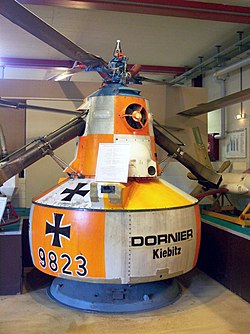| Do 32K/Do 34 Kiebitz | |
|---|---|
 The Do 32K on display at the Dornier Museum | |
| General information | |
| Type | Unmanned reconnaissance helicopter |
| National origin | Germany |
| Manufacturer | Dornier Werke GmbH |
| History | |
| First flight | 1970 |
| Developed from | Dornier Do 32 |
The Dornier Kiebitz was an unmanned military reconnaissance mobile platform used for battlefield reconnaissance duties such as moving target detection and tracking. [1]
